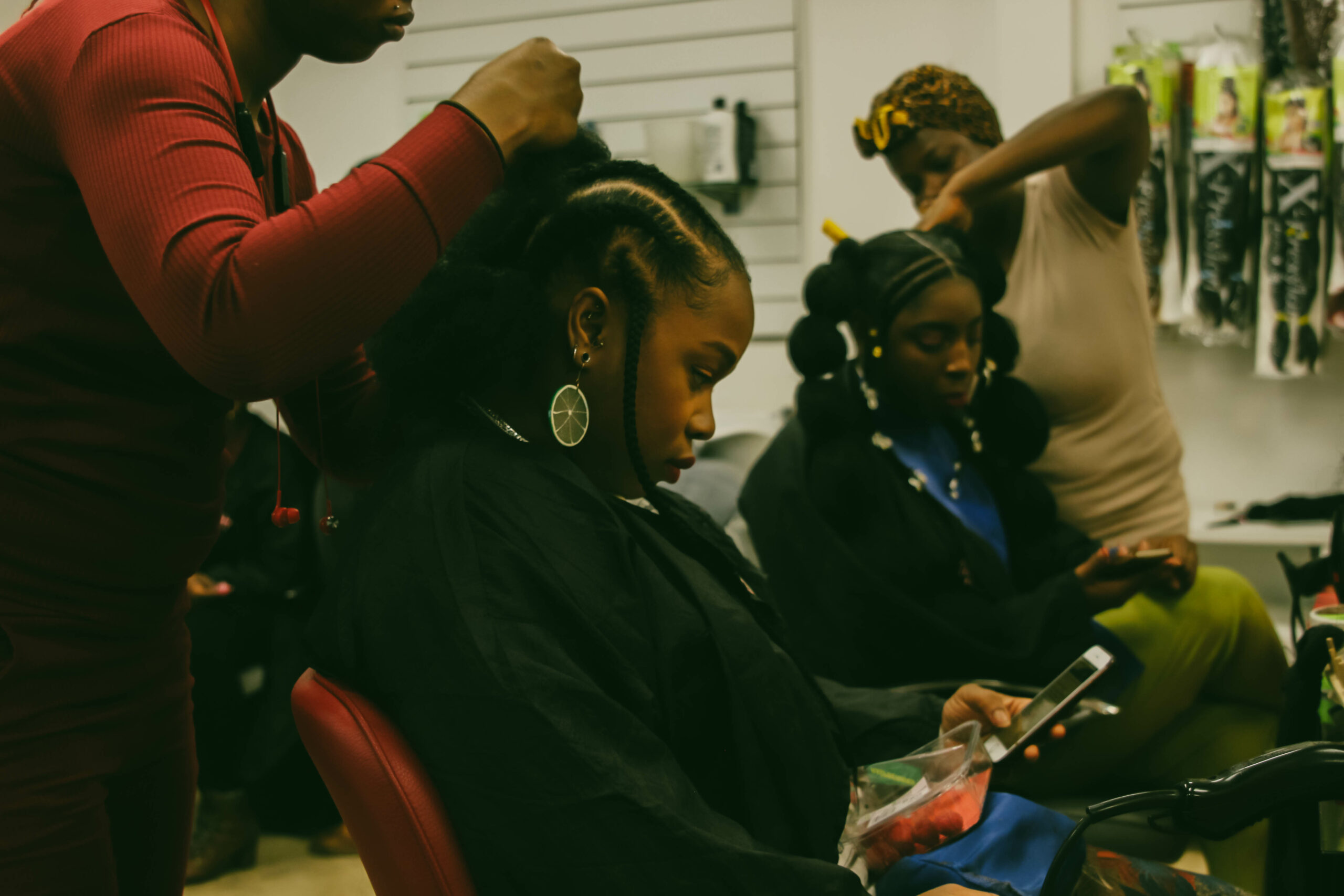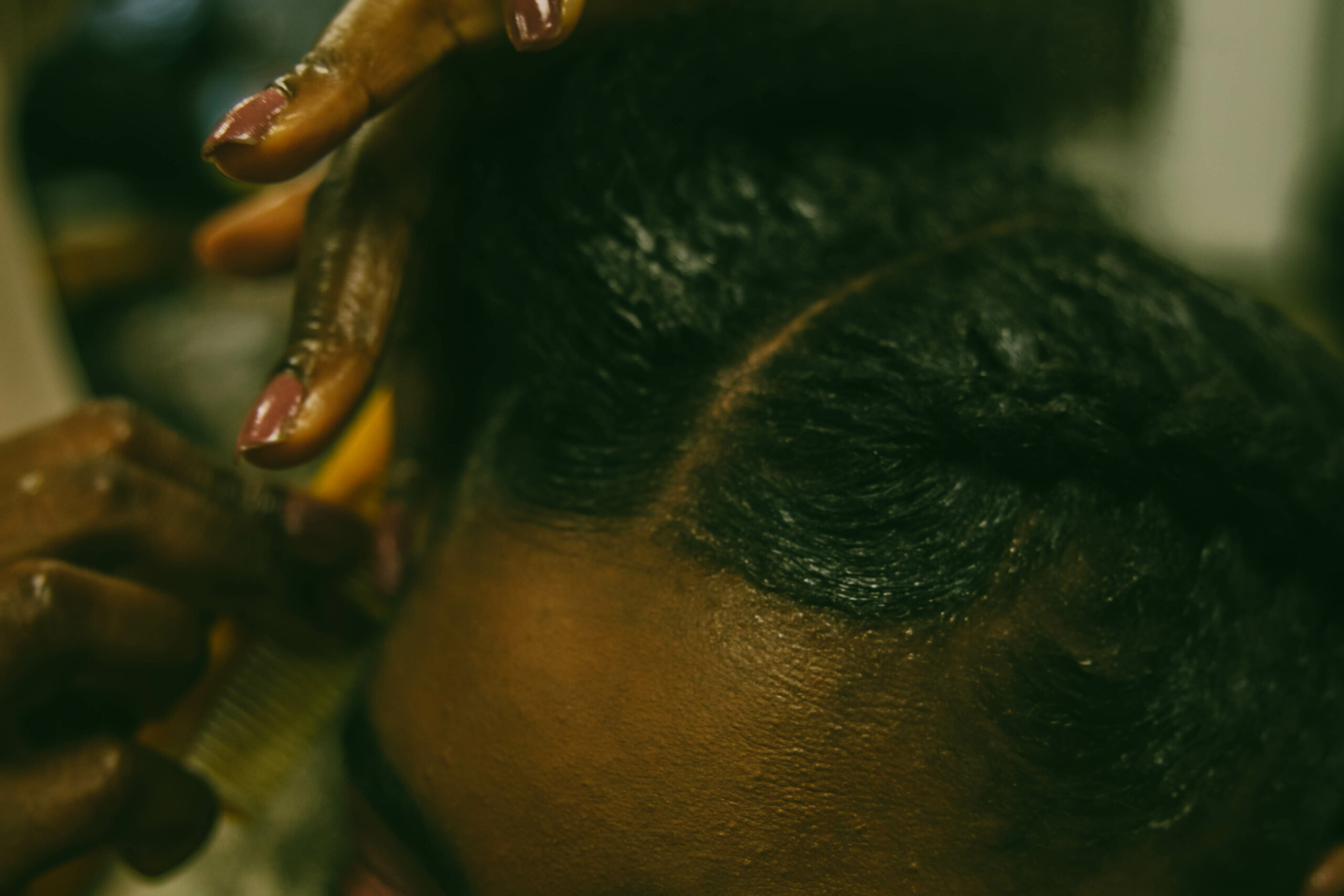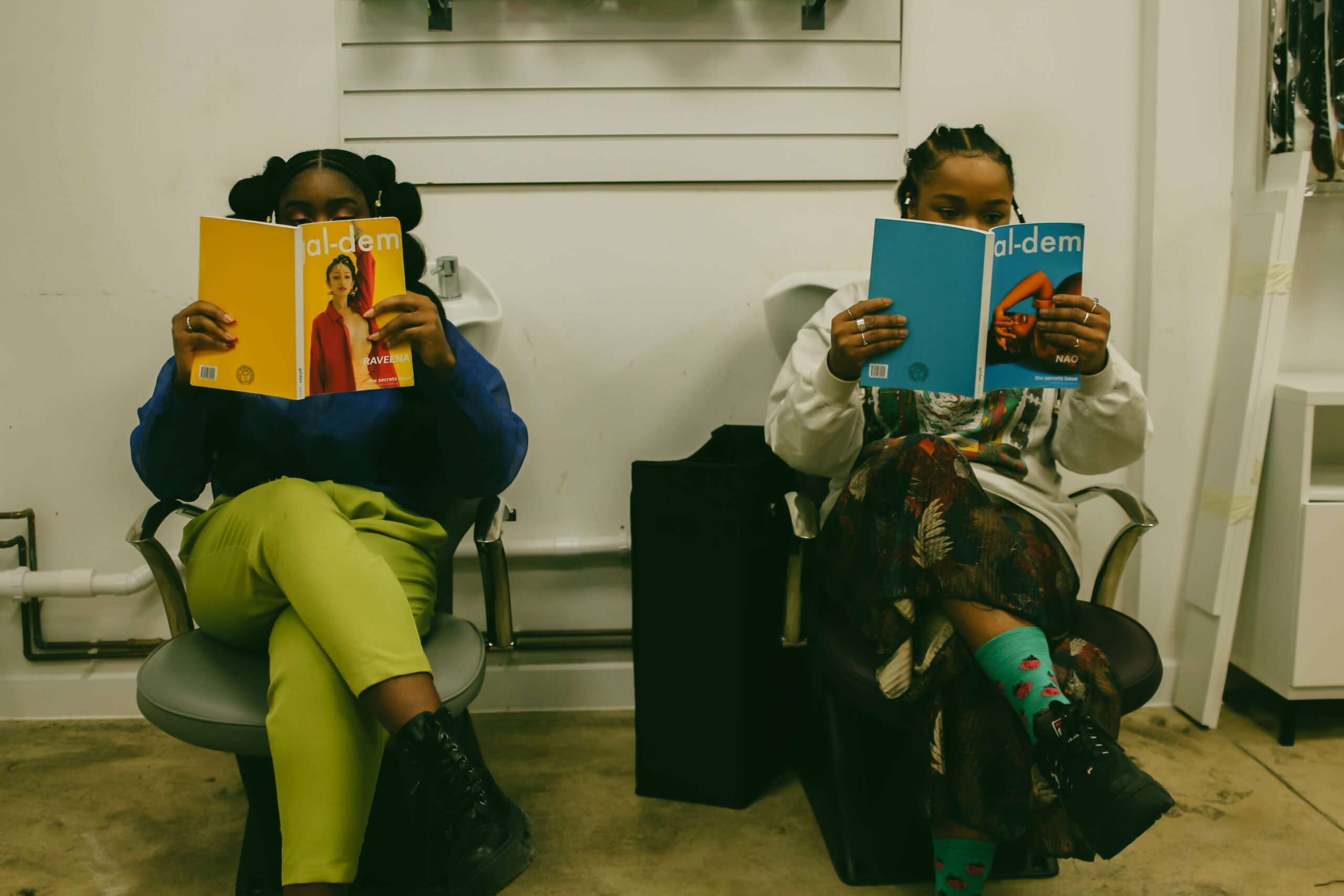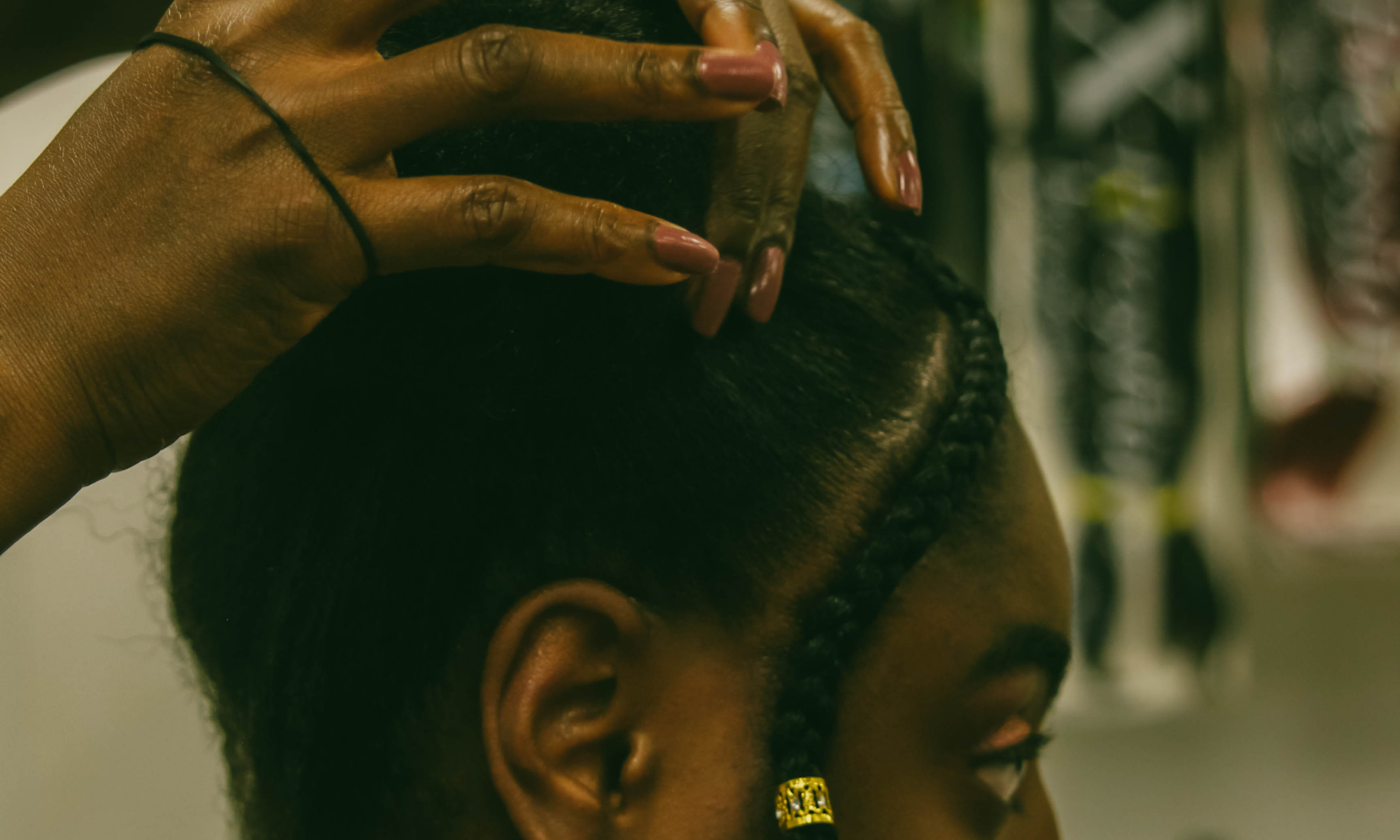
Photography by Yossy Akinsanya for gal-dem / Peckham Palms
Afro Answers: how to gel your hair without Gorilla Glue and why you shouldn’t toothbrush your edges
In light of *that* incident, trichologist Ebuni Ajiduah explores how to safely lay your edges, and why we feel the need to in the first place.
Ebuni Ajiduah
14 Feb 2021
This week most of us have been stuck to our phones waiting for updates on Tessica Brown’s hair – AKA #gorillagluegirl. In the pursuit of laid edges, our good sis almost had to lay her edges and scalp to rest. She substituted got2be hair spray for the heavy-duty Gorilla Glue (not to be confused with hair range Gorilla Snot). After a month and several washes, the style was fresher than ever and completely stuck in place. The removal was almost impossible and took the old adage ‘beauty is pain’ to a whole new level. This DIY-gone-wrong was extreme but goes to show just how dedicated we are to a slicked-back style.
How to lay your edges without causing harm
Use a soft bristle brush – a toothbrush is an implement most favoured but if it can remove plaque just think about your poor follicles. ‘Baby hair’ is often finer and more susceptible to damage, so be gentle with them. Constant tension from brushing and tight styles can lead to traction alopecia which could be permanent. A good test is to raise your eyebrows or move your head up and down .– if it is too tight this will be uncomfortable.
Choose your gel wisely – Eco Styler is the go-to but it’s incompatible with lots of moisturisers, causing it to flake – plus it may not be strong enough for thicker and kinky hair textures. There are an assortment of gels, jams and pomades available that promise to keep your hair in place even if the wind changes. Alternatively, their are ‘natural’ gels that can be made at home from items like flaxseed and may contain less synthetic ingredients that are perceived as harmful like alcohol. These natural gels can lack strength and preservatives so don’t last long if they’re homemade. IC styling gel is a product that lies somewhere in between. It is made with aloe vera extract and can also keep your styles slick – another bonus is that it washes out super easily.
Mix it up – The key to finding the perfect gel is getting one that works well with your other products. To check this you can mix a little of the gel with your leave-in on the back of your hand to see if or how it dries. If you end up with a gunky mess or it dries crumbly, you know they don’t work well together – the aim is a clear thin intact layer. Hairspray or mousse can be applied when you want more hold than sleekness.
Wrap n heat (or sleep) – Rather than using tons of product, apply to slightly damp hair (let me plug my fabulous mist bottles real quick). Style your hair as wanted, then wrap it up and use a hairdryer to set the style. If you are averse to heat, use a little less water and do the same process but air overnight. By giving the hair time to dry and set, you increase the longevity of the style.
Keep it clean – Lastly, keep your hair clean! Hair should be washed every 7-14 days regardless of style. Excess products in the hair can make it brittle and dehydrated, or cause build-up on the strands and scalp.
Let Tessica Brown be a cautionary tale, please only use products intended for hair and read the label thoroughly for instructions!
Does the pursuit of a perfect wash-n-go relate to Eurocentric beauty standards?
The pursuit of a perfect wash ‘n’ go is on the bucket list for a lot of naturals – dare I say most. But how much of this desire is purely style-based and how much is wrapped in the want of a looser texture and more palatable coils? I really sit on the fence with this one. As a hairdresser, I know it can just be a style choice, allowing for quick mornings and no manipulation between wash days. But there seems to be a more sinister side just under the surface.
Instagram is full of transformation pictures showing half a head of 4c* hair and half a head of super defined ‘wet look’ curls. The comments will be filled with praise. Harmless for some but these styles allude to the fact that afro hair is often only seen as presentable when it is hidden under extensions or drowned in products and made to submit. Even the fact that most products are marketed as all being curl ‘defining’, ‘enhancing’ or activating is all a bit sus.
While I love to switch it up, it feels like afro hair is always made to be compliant. We’re constantly fed negative stereotypes about our hair – it’s dry, it doesn’t grow or it’s unmanageable. Whether you understand it or not, style choice is seen as political. Wear a weave and you hate yourself, rock a fro and you are a threat to the status quo.
The segregation of afro hair by coil type and exclusion of kinkier textures in the mainstream also deepens the divide and any manipulation can be viewed negatively even if it is not done to assimilate. Black women should have the freedom and autonomy to wear their hair as they please without fear of reprimand but we seem to be really far away from this.
I am grateful for initiatives working against hair and texture discrimination, like Project Embrace’s #Afrovisibilty, which puts billboards around the UK showcasing afro hair in all its ‘professional’ glory and the Halo Collective, who are campaigning to end race-based hair discrimination. I do hope to see a similar version of the CROWN act in the UK, but in the meantime, we can all play our part.
For me, my loc journey has helped me to get more comfortable with the idea of my hair not always looking ‘neat’ or the pressure to feel like my hair must be ‘done’. For others, it could be wearing wigs without feeling the need to prove you have long hair tucked away. Even though we are still begging white people to keep their hands out of our hair, maybe we can also be a little gentler with each other and respect style choices. In other words, a style is complete with slicked edges or flyaways and ‘to gel or not gel’, is not a philosophical question.
This is part of the Afro Answers column. If there are any afro hair questions you would like answers to in a future column, email them to charlie@gal-dem.com with the subject line “Afro Answers”





